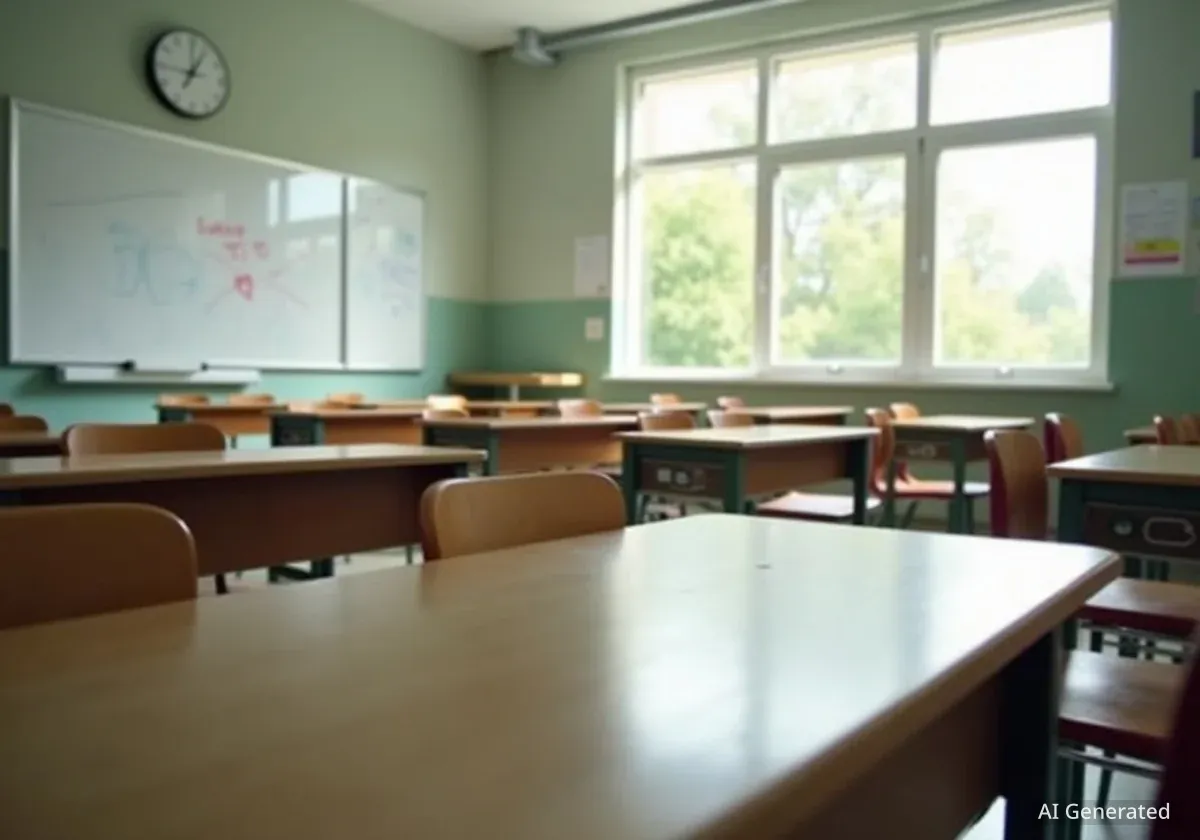A new Florida law is allowing a Miami-based charter school, Mater Academy, to request rent-free space inside a St. Johns County public school building. The district received an unexpected notice from the charter operator demanding access to facilities at First Coast Technical College, citing a state rule that has not yet taken effect.
The move has raised significant financial and logistical concerns for the St. Johns County School District, which states it is a growing district with no empty space to spare. The district is now evaluating its legal options and the potential impact of the law, which could force public schools to cover operational costs for charter schools co-locating on their campuses.
Key Takeaways
- Mater Academy, a charter school operator, has formally requested to use space at First Coast Technical College in St. Johns County, rent-free.
- The request is based on a revised Florida law for "Schools of Hope," which allows charter operators to claim "underused" public school facilities.
- The law requires the public school district to cover all operational costs, including utilities, security, and maintenance for the charter school.
- St. Johns County Superintendent Dr. Brennan Asplen stated the notice was premature, as the law does not take effect until October 28.
- The charter school plans to open a K-12 facility in August 2027 with a projected enrollment of 1,884 students, which could impact district funding.
A Surprising Demand Under a New State Law
School districts across Florida are navigating a new legislative landscape, and St. Johns County is among the first to face its direct implications. The district received an unsolicited notice from Mater Academy, a prominent charter school organization based in Miami, demanding the right to co-locate within one of its existing school buildings.
The request specifically targets First Coast Technical College in St. Augustine. According to St. Johns County Superintendent Dr. Brennan Asplen, the notice arrived without any prior communication. "They’re asking to utilize open space at our First Coast Technical College," Asplen said. "When we receive that, you know, we’re thinking, ‘Well, we’re a growing school district. We’re building schools. We don’t have empty spaces.’”
Mater Academy is leveraging a revised state statute related to "Schools of Hope." This designation allows certain charter school operators, known as Hope Operators, to identify and claim space in public school facilities that the state deems "underused, vacant or surplus."
What Are 'Schools of Hope'?
The "Schools of Hope" program was established by Florida lawmakers to encourage high-performing charter schools to open in areas with historically low-performing public schools. The recent revision to the law expands the power of these charter operators, giving them the ability to take over parts of existing public school campuses at no cost.
Questions of Timing and Legality
While Mater Academy has made its demand, the timing is a point of contention. The revised rules that grant them this authority are not scheduled to take effect until October 28. Furthermore, state guidance indicates that official notices can be submitted beginning November 11.
Superintendent Asplen confirmed that Mater Academy's notice was sent prematurely. Despite this, the district is taking the request seriously. "We’re gonna be looking at that more closely to see where the open capacity might be that they’re even talking about," he stated.
According to the statute, the district has 20 calendar days from the official notice to provide a written response. The St. Johns County School District has announced it will review the premature notice and gather more information before formally responding in the coming weeks. Asplen noted that as of now, there has been no direct contact between the district and Mater Academy officials.
Mater Academy's Five-Year Plan
The notice sent to the district outlines an ambitious plan. Mater Academy intends to open a K-12 school in August 2027. Their five-year enrollment projection is 1,884 students. The request also includes demands for building floor plans and access to the facility before and after regular school hours.
Financial Burdens and Operational Challenges
One of the most significant concerns for the district is the financial arrangement mandated by the new law. If the co-location proceeds, Mater Academy would operate on the public school campus entirely free of charge.
The host district would be responsible for all associated operational costs. "According to the law, the charters will be able to move in free of charge," Asplen explained. "We would end up paying for the security, the utilities, the cleaning, the food."
"So everything that we normally pay for in our schools, we would be paying for those, and they don’t have to pay that." - Dr. Brennan Asplen, St. Johns County Superintendent
Asplen suggested that lawmakers may not have fully considered the added costs. While a facility's base costs are already being paid, opening up a previously closed-off or underused section would lead to new expenses. "Now you might need a couple of more custodial staff that you’ll have to pay for. You’ll have higher electric bills that you have to pay for, and those kinds of things," he said.
Logistical Hurdles of a Shared Campus
Beyond the financial strain, the superintendent pointed to the complex logistics of housing two separate school administrations under one roof.
Key operational questions remain unanswered, including:
- How would student transportation and food services be coordinated?
- Who would be responsible for campus-wide safety and security protocols?
- How would two different leadership teams and school boards manage a shared space?
"You have two principals and two different boards, and they’re doing their own thing and we’re doing our own thing, but we’re all under the same safety laws and how we operate," Asplen commented, highlighting the potential for conflict and confusion.
Impact on District Funding and Future Planning
The potential arrival of a large charter school also threatens the district's per-student funding. Currently, St. Johns County receives approximately $9,100 per student. If 1,884 students enroll in the new Mater Academy school instead of traditional public schools, it would represent a significant diversion of funds away from the district.
This situation presents a major challenge for a district that describes itself as rapidly growing and actively building new schools to accommodate its expanding student population. The idea of ceding space to an outside operator seems counterintuitive to its current needs and long-term planning.
As the St. Johns County School District prepares its response, its situation is being watched closely by other districts across Florida who may soon face similar demands under the state's new charter school legislation.





